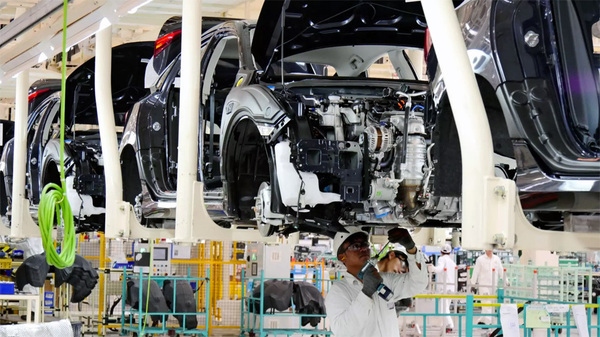Investors prefer trading in land, shun the less profitable auto industry
Vingroup has sent a dispatch to the Ha Tinh provincial People’s Committee, proposing a project on an automobile complex.
The complex would include the VinFast automobile manufacturing factory and a chain of factories making car parts and hi-tech audio-video devices.
The group wants to set the automobile complex in Vung Ang Economic Zone, covering an area of 2,000 hectares. There are large automobile centers in Vietnam, including Hanoi, Vinh Phuc, Hai Duong, Hai Phong, Quang Ninh, Ninh Binh, Quang Nam, HCM City and Binh Duong. If provincial authorities give the nod on the project, Vietnam would have one more center in Ha Tinh.
According to the Ministry of Industry and Trade (MOIT), Vietnam has great advantages in developing an automobile industry, including a large and expanding market, advantageous position for global logistics activities and a skilled labor force.
Moreover, unlike Malaysia, Thailand and Indonesia, drivers must drive in the right lane, which is an important factor for production organization and manufacturing cost.
These factors are enough to turn Vietnam into an automobile general headquarters in the future. Analysts also believe that Vietnam’s automobile market is entering a golden period because of the rapid increase in vehicle ownership. If Vietnam can grab this opportunity, its automobile industry will develop strongly.
According to MoIT, by 2020, Vietnam’s automobile industry had reached important goals – joining global supply chains, exporting CBU (complete built unit) cars, and creating Vietnamese car brands.
However, the ministry pointed out that Vietnam’s automobile industry is facing barriers, including a low localization ratio, and uncompetitive production costs compared with CBU imports from ASEAN member states, and a small market.
In 2019, the total automobile output was 281,000 products of different kinds, while the car output was 200,000. Of these, only 11 models had output of 6,000 products a year or higher.
Since the domestic market remains small, it is difficult to develop supporting industries because the products do not have competitive prices. Meanwhile, weak supporting industries will not help reduce automobile manufacturing costs.
MoIT estimates that there are 350 enterprises related to automobile manufacturing in Vietnam, including 214 car part facilities. The figure is small compared with Thailand and Indonesia.
The car parts made in Vietnam are mostly simple and have low added value. Vietnam doesn’t have many local vendors that can satisfy requirements on quality, cost and delivery time to be able to join global supply chains.
Nguyen Minh Dong, a respected automobile expert, said that difficulties, high risks and low profits are foreseeable if investing in automobile supporting industries. Meanwhile, land prices in many localities are escalating, which makes it more profitable to trade land than to manufacture cars.
If the Government doesn’t have policies on encouraging the development of supporting industries, investors will pour money into land instead of supporting industries.
Vietnam remains a small market with 400,000 cars of different kinds a year. Of this, domestically assembled cars account for 60%, which is one-third of the Thai and one-fourth of Indonesian markets. The small market makes it difficult to develop the automobile industry.
Experts all agree that in order to expand the automobile industry, it is necessary to encourage people to use cars, because the industry has a close relation with households.
Only when the market gets larger will Vietnam be able to develop supporting industries which would allow it to reduce automobile manufacturing costs.
However, Vietnam still restricts car consumption with high taxes and fees, which makes them unaffordable for the majority of people.
The auto industry has a high technology content. The industry development, for example, was prioritized in Japan and the Republic of Korea with preferential policies, which helped to turn it into a key industry of the economy, making a great contribution to helping the two economies escape the middle-income trap and become developed countries.
Vietnam doesn’t have such policies.
Automobile industry centers have been arising in Vietnam, but the risks in the industry are high. If production costs continue to be uncompetitive with CBU imports from ASEAN, the domestic market will be out of reach of domestic manufacturers.
If processing and manufacturing industries cannot develop, Vietnam will depend heavily on imports. This will bring low added value and affect long-term economic growth, thus making it difficult to achieve the goal of escaping the middle-income trap and becoming a developed country.




